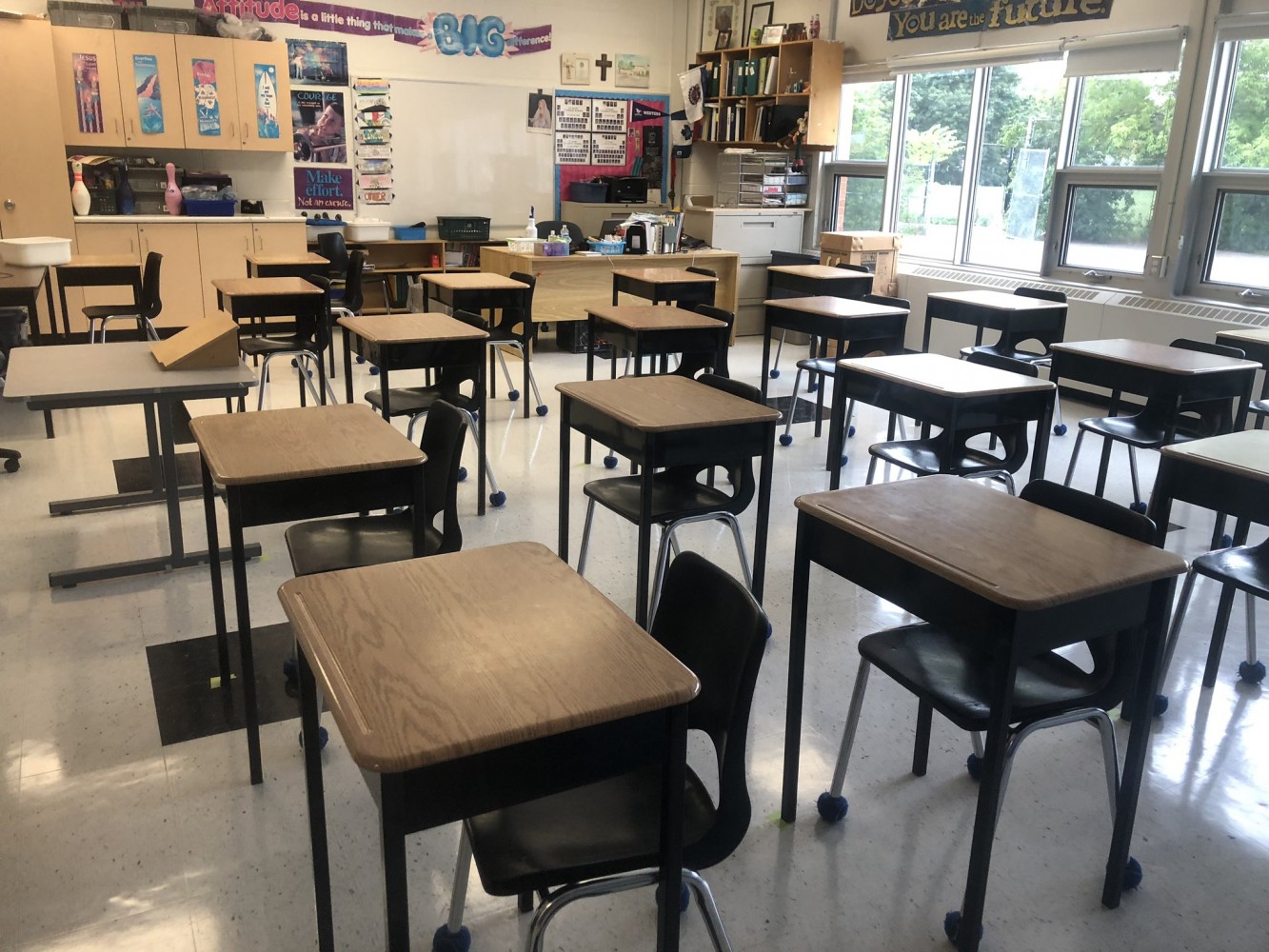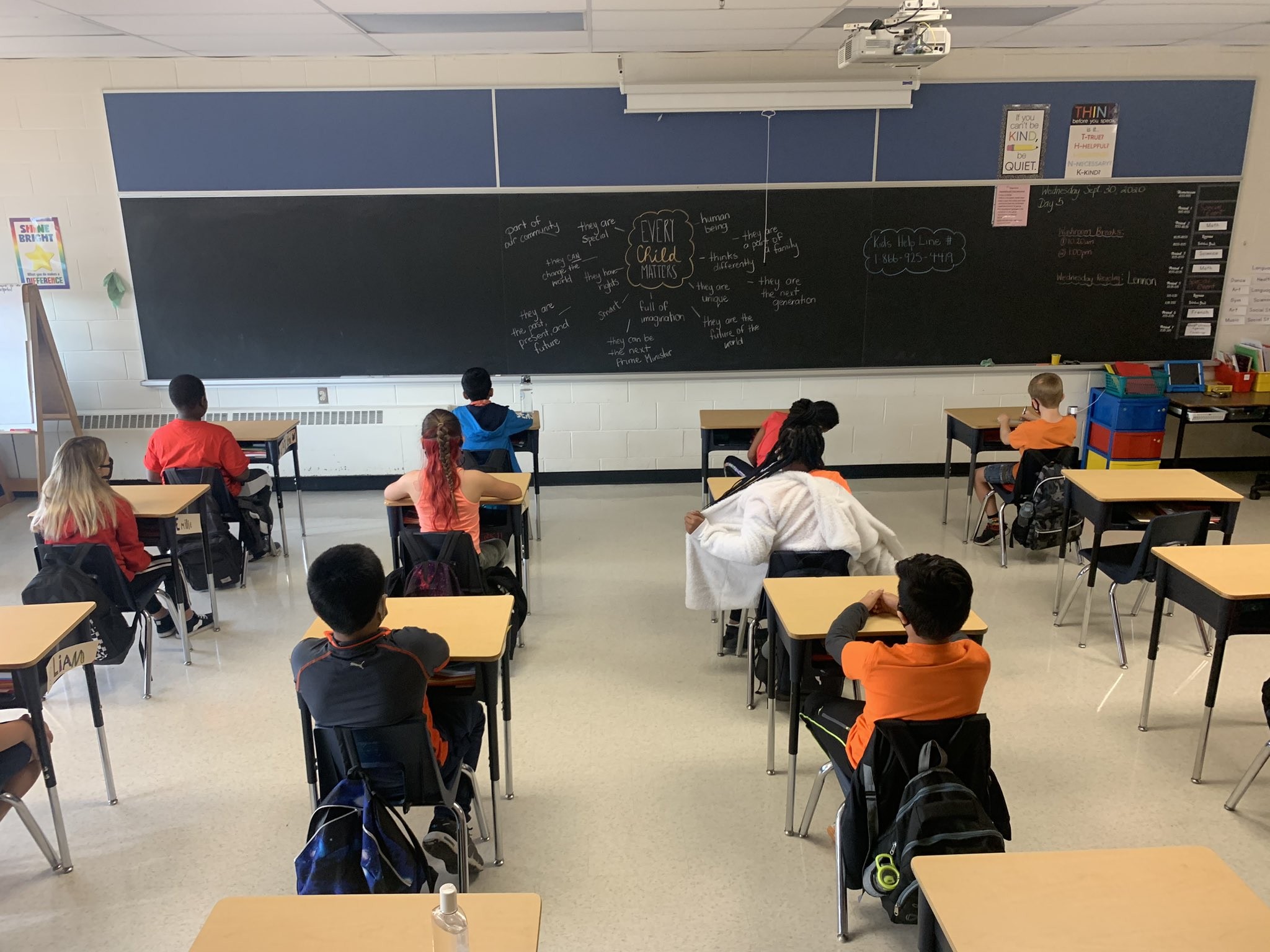
Peel teachers’ unions demand schools stay closed next week
As Ontario reaches a seven-day average of more than 3,000 new daily COVID-19 cases, Peel teachers’ unions are rebuking the decision to re-open schools for in-person instruction during the provincial shutdown.
Elementary students who opted for in-person learning – and their teachers – are due back in school on Monday, with secondary students slated to return to the classroom during the last week of January.
Since the start of the province-wide shutdown on Boxing Day, Peel has recorded some of its highest daily totals including 713 new infections on January 2, more than any other single day total since the start of the pandemic. Peel has been in lockdown since November 23, but the restrictive measures have not significantly slowed the rate of new infections in the region. While Peel’s incidence rate briefly showed signs of slowing earlier in December, transmission related to holiday gatherings will “bear out in our numbers over the coming weeks,” Mississauga Mayor Bonnie Crombie said in a press conference Wednesday.
According to Peel’s latest epidemiologic report, released Monday, the Region’s test positivity rate for the week of December 20 was 10.2 percent, more than four times the 2.5 percent mark that indicates viral spread is still under control. It notes that, “The lowest testing rates are observed among children under 19, but incidence and percent positivity among this group increased in October, following school reopening.”
Now, with surging case counts and hospitalizations, the Peel Elementary Teachers’ Local president Gail Bannister-Clarke is calling on the Region’s Medical Officer of Health, Dr. Lawrence Loh, to direct schools to remain online only. “[The] data do not appear to support a return to in-person learning next week,” she wrote in an open letter to Loh and the municipalities’ mayors. “This issue cannot be effectively addressed with a province-wide, one-size-fits-all response. Nothing has changed. A regional, data-driven response is required.”
Almost half of the 15 outbreaks recorded in Peel District elementary schools happened over the first two weeks of December before the holidays, she stated, representing 300 of the 700 school cases identified so far.

While public health measures have been implemented to prevent the spread of the novel coronavirus in schools, Peel has seen hundreds of cases among students.
The Province has offered mixed messaging on the status of closures. On Saturday, Education Minister Stephen Lecce sent a statement to parents to highlight the government’s expanded financial relief for eligible students – including a $200 program that begins accepting applications on January 11 – and reaffirm “the importance of in-person learning.”
However, by Wednesday, Premier Doug Ford told reporters at a press conference the government would be consulting public health advisors regarding school re-openings. “That's the expertise that we're going to take… and we'll be announcing that in the next day or so,” he said, following his statement about new COVID-19 testing at Toronto Pearson International Airport’s arrivals terminal.
Premier Ford has said more information about school reopenings will be released in the coming days.
In Peel, Dr. Loh said the date of school re-opening is actively under discussion and the apparent plateau in cases “is factoring very closely into any decision or recommendation that I plan to render in the days to come.”
He echoed previous comments that schools have not been significant drivers of COVID-19 transmission.
Ryan Harper, acting president of the Ontario Secondary School Teachers’ Federation District 19, said teachers don’t have confidence in that conclusion due to the lack of on-site asymptomatic testing.
“I do think that there's sometimes a misconception that teachers want schools to be closed. It's not necessarily the case,” he said. “I think most of our members would like schools to be open, but for there to be a guarantee that it's going to be safe, small class sizes, asymptomatic testing, contact tracing – and those things are not happening.”
While resuming in-person classes during the shutdown remains up in the air, the Peel District School Board is giving parents a final opportunity to switch their child’s learning model by Monday.
A November 10 report by the Board analyzed community factors that played into the choice to learn online or in-person, using public health unit and student enrollment data. The Board found no correlation when comparing household income, poverty, overall school population size, and an indicator called the social vulnerability index, a measure of populations who are at greatest need of additional social support. A moderate correlation was found between the total COVID-19 case rate and students attending school virtually, and there was a high correlation with race. About 87 percent of PDSB students identify as a visible minority.
The data do not prescribe a cause and effect, PDSB spokesperson Kayla Tishcoff said in an email in November.
“This specific graph identifies that there is a correlation between online learners and racialized communities – this is understandable, given that the majority of Peel board students” identify as racialized, she said. “As a board, we are committed to ensuring each student is represented and reflected in the learning experiences and learning environments we provide.”
In PDSB elementary schools, the number of students learning virtually had increased from September, with 57 percent staying at home by November, while 45 percent of secondary students were learning online, a figure that had also increased.
Brampton has the highest proportion of online learners within PDSB, at about 66 percent of students in elementary and 56 percent in secondary schools, according to the November report. This represents at least 20 percent more than the proportion of students learning online in Mississauga and Caledon.
PDSB is confronting its culture of anti-Black racism and bias against visible minority students, following a scathing report ordered by the Ministry of Education in late 2019, and the subsequent firing of its director of education, Peter Joshua. Among its recent initiatives, the Board is now working to address education opportunity gaps for Black and Indigenous students in accessing limited enrollment for specialist streams, such as the international baccalaureate program.
“Remember, we are in a double pandemic. We have a pandemic called racism and discrimination that was here long before COVID-19, and in fact, a lot of racialized people that find the virtual setting less traumatic for their kids to get an education,” Peel Trustee Kathy McDonald (Wards 3 and 4 in Brampton) told The Pointer in November.
She said online learning has “vastly improved” compared to March, and she is receiving fewer complaints from parents. The conversation for educators has shifted to assessing learning skills in a virtual setting and understanding how student performance has changed. McDonald said a principal at a school outside her ward observed that some students who were repeat visitors to the office or deemed “problematic” are now very engaged in their academic life from home.
“We have to look at why is it that in the virtual world, you have these students thriving and excelling, whereas in the bricks and mortar schools, they seem to be just surviving and getting by,” McDonald said.
Teachers like Colleen Elep are ensuring that students feel supported while learning online, and she is helping her colleagues adjust their social studies curriculum, especially in Grade 6, to focus on anti-Black racism.
“We’re all working hard to make sure that our students don’t fall through the cracks,” said Elep, an ESL teacher at Balmoral Drive Senior Public School in Brampton, in a November interview. Virtual learning has given her colleagues the impetus to come up with creative online learning solutions. She set up a virtual classroom website using Bitmoji avatars that kids would recognize, and said she is impressed with the level of innovation from her peers.
“I hope technology does help to mitigate this gap [from] widening,” Elep said. “The fact that we've actually been able to allocate, I think, a substantial amount of technology to our students, and our students know to reach out to us if they don't have technology…it helps. I’m optimistic.”
Email: [email protected]
Twitter: @LaVjosa
COVID-19 is impacting all Canadians. At a time when vital public information is needed by everyone, The Pointer has taken down our paywall on all stories relating to the pandemic and those of public interest to ensure every resident of Brampton and Mississauga has access to the facts. For those who are able, we encourage you to consider a subscription. This will help us report on important public interest issues the community needs to know about now more than ever. You can register for a 30-day free trial HERE. Thereafter, The Pointer will charge $10 a month and you can cancel any time right on the website. Thank you.
Submit a correction about this story


